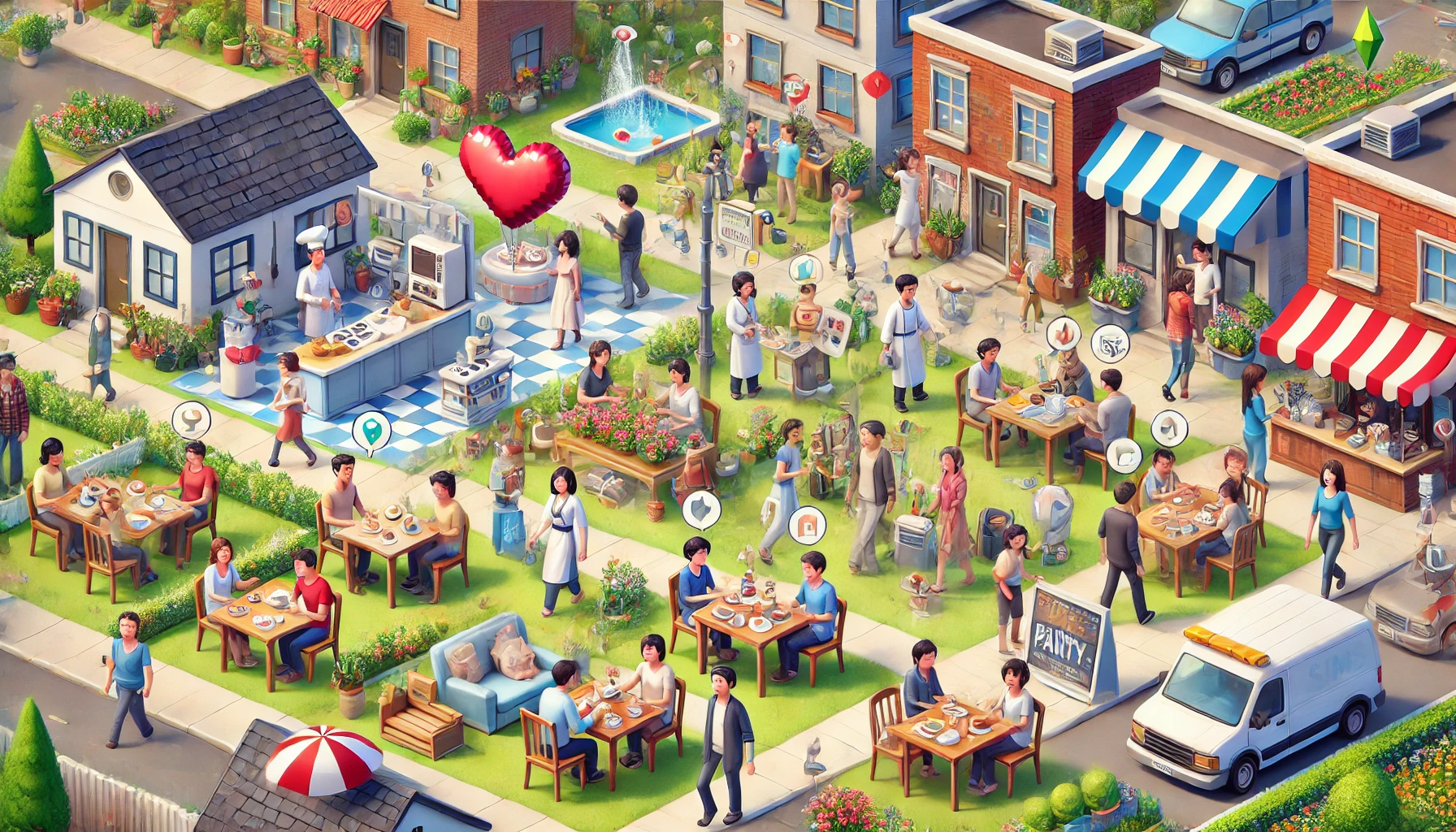Read the paper: https://arxiv.org/pdf/2304.03442
Github Repo and how to run in your computer: https://github.com/joonspk-research/generative_agents
Standford HAI Blog: https://hai.stanford.edu/news/computational-agents-exhibit-believable-humanlike-behavior
Introduction
Imagine a world where every action you take, every conversation you have, and every relationship you form is not just part of your daily life but a meticulously simulated series of events governed by a highly sophisticated computer program. This idea, reminiscent of the iconic movie “The Matrix,” posits that we might all be part of an intricate simulation, much like the characters in the popular computer game The Sims. Now, this concept is not just a figment of science fiction but a burgeoning reality in the realm of artificial intelligence (AI) and machine learning, thanks to the development of generative agents.
The Genesis of Generative Agents
In a recent paper titled “Generative Agents: Interactive Simulacra of Human Behavior,” researchers from Stanford University and Google DeepMind have introduced a groundbreaking AI architecture designed to simulate believable human behavior in interactive environments. These generative agents are computational entities capable of emulating daily human activities, from mundane tasks like cooking breakfast to complex social interactions such as forming relationships and planning group activities.
Living in Smallville
To demonstrate the capabilities of these generative agents, the researchers created an interactive sandbox environment reminiscent of The Sims, aptly named Smallville. In this small town, 25 agents live, work, and socialize, creating a dynamic community where each agent operates based on its unique experiences and interactions. These agents can plan their days, share news, coordinate events, and even form opinions about each other, all within a simulated environment.
The Architecture of Simulated Life
The core of this innovative system lies in its architecture, which extends a large language model to include a memory stream, reflection mechanisms, and planning capabilities. Here’s how it works:
- Memory Stream: This component stores a comprehensive record of each agent’s experiences in natural language. It allows agents to recall past events and use this information to guide their current actions.
- Reflection: Over time, agents synthesize their memories into higher-level reflections, enabling them to make inferences and develop a deeper understanding of their environment and relationships.
- Planning: Agents use their memories and reflections to create detailed action plans. This planning process ensures that their behavior remains coherent and believable over long periods.
Innovative Ideas and Key Points
The paper presents several innovative ideas and key points that push the boundaries of what AI and generative models can achieve:
Believable Human Simulations
The primary goal of generative agents is to create believable proxies of human behavior. This involves not just replicating isolated actions but ensuring long-term coherence in behavior. Agents remember past events, reflect on them, and use these reflections to plan future actions. This process mimics human thought patterns and decision-making processes.
Dynamic Interaction and Memory Retrieval
Generative agents dynamically retrieve relevant memories to inform their current behavior. This retrieval process is sophisticated, considering factors such as recency, importance, and relevance to the current context. For instance, if an agent needs to decide how to react to a situation, it will pull from its most relevant past experiences to determine the best course of action.
Emergent Social Behaviors
One of the standout features of these agents is their ability to exhibit emergent social behaviors. This means that the interactions between agents can lead to the development of complex social dynamics without explicit programming for each possible interaction. For example, an agent’s decision to throw a party can lead to a chain of social interactions, invitations, and even new relationships forming among agents.
Advanced Planning and Reaction Mechanisms
The planning capabilities of generative agents are advanced, allowing them to create and adjust detailed action plans. Agents can break down their plans into smaller, manageable tasks and dynamically adjust these plans based on new information or changes in their environment. This ability to plan and adapt is crucial for maintaining believable and coherent behavior over time.
A Day in the Life of a Generative Agent
Consider John Lin, a pharmacy shopkeeper in Smallville. His day starts at 7 a.m. with a routine that includes brushing his teeth, taking a shower, and having breakfast. By 9 a.m., he opens his pharmacy. Throughout the day, John interacts with other agents, recalls past conversations, and adjusts his plans based on new information. For instance, if John sees his son Eddy working on a music project, he might later reflect on Eddy’s dedication to his studies and plan future interactions accordingly.
Emergent Social Dynamics
One of the most fascinating aspects of these generative agents is their ability to exhibit emergent social behaviors. For example, if an agent named Isabella decides to throw a Valentine’s Day party, this initial intent can spread through the community organically. Agents will remember the invitation, invite others, and coordinate to attend the party, showcasing a high level of social coordination and memory retrieval.
Ethical Implications and Future Applications
While the potential applications of generative agents are vast, ranging from immersive gaming experiences to advanced social simulations, they also raise significant ethical questions. The researchers emphasize the importance of addressing risks such as the formation of parasocial relationships, misuse in deepfake technologies, and ensuring that these agents complement rather than replace human interactions.
Conclusion
The development of generative agents marks a significant leap toward creating interactive systems that can mimic the intricacies of human behavior. As we venture deeper into the realm of AI, the line between reality and simulation continues to blur, bringing us closer to a world where our digital counterparts might one day be indistinguishable from ourselves. Whether we are living in a simulation or not, the advancements in AI promise to transform our understanding of human behavior and interaction in profound ways. Welcome to the future, where The Sims meets The Matrix, and the possibilities are limitless.

